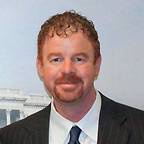AARP Hearing Center

In Idaho, Social Security continues to play a critical role, accounting for 66 percent of the typical older Idahoan’s income, lifting nearly 40 percent out of poverty. While most beneficiaries are retirees, the program also provides benefits to widows, spouses and survivors of workers, people with disabilities and children. The average Social Security benefit is about $1,130 a month — which means $3.6 billion paid out each year, most of which beneficiaries spend right here in Idaho.
In today’s economic climate, the importance of Social Security and Medicare (which turned 47 last month) continues to grow. In fact, a recent AARP survey found that six in 10 boomers plan to rely on the programs even more due to the economic downturn.
The sustainability of these programs are hot topics inside the beltway, where there’s a looming debate over their future. And AARP is working to bring that debate to the people. Earlier this year, AARP launched You’ve Earned a Say, to listen and discuss some of the public policy options on the table in Washington, D.C., and engage our 180,000 members in Idaho in the conversation.
As part of You’ve Earned a Say, AARP has been pounding the pavement across the state of Idaho, meeting with our members and the public, in town hall meetings, senior centers, and through community events to get their feedback and perspective on the future of Social Security and Medicare, what Washington is talking about on the issues, and make sure they have a say.
We’re hearing concern from across Idaho: people say they think the programs are in need of changes and are in a state of crisis, they’re worried about getting less back than they’ve paid in. They want the programs to be strong for their children and grandchildren. Idahoans are ready; they simply want to make sure their voices are heard.
So what’s on the table?
Several options to address the long-term solvency of Social Security and Medicare have risen to the top in Washington.
For Social Security, some options being discussed to fill the projected funding gap include:
- Raising the retirement age.
- Recalculating the cost-of-living adjustment.
- Increase or eliminate the payroll tax cap (currently wages over $110,000 aren’t taxable for Social Security).
For Medicare, some solvency options from Washington include:
- Raising the eligibility age from 65 to 67.
- Raising Medicare premiums.
- Changing Medicare so beneficiaries receive health coverage through private insurers with the federal government contributing a fixed amount towards premiums.
These are just a few of the options. More can be found at www.earnedasay.org. We’ve enlisted experts from the Brookings Institute and the Heritage Foundation to help lay out the pros and cons of these options and help Idahoans make informed decisions on the issues, the potential impact, ensuring that they are making their voices heard and views known.
Social Security’s birthday comes at a time when, according to a new AARP survey, only half of baby boomers believe they will ever be able to retire, with two-thirds saying they expect to delay it.
Across Idaho and the nation, people are worried about the future of the programs, economic anxiety is high, and they say the candidates aren’t talking enough about Social Security and Medicare. So as Social Security turns 77, we’re calling on Idahoans to join the debate and make their voices heard loud and clear on the issues — they’ve earned a say.
Mark Estess is the state director for AARP in Idaho.































































